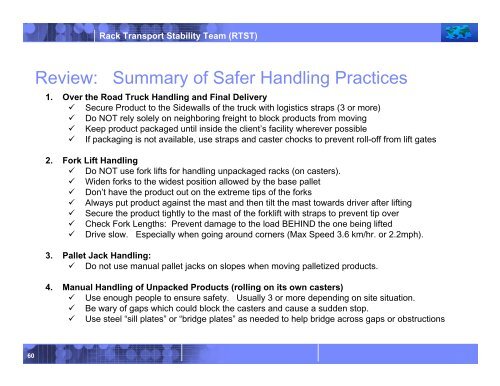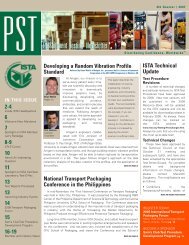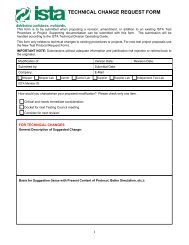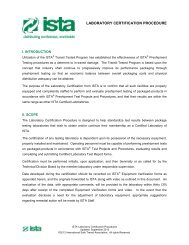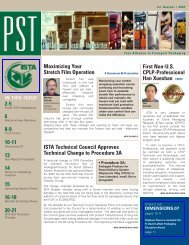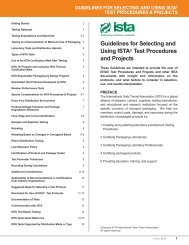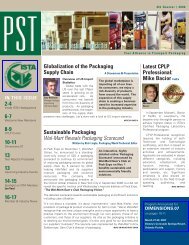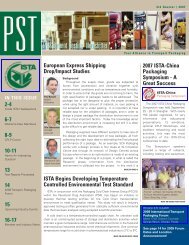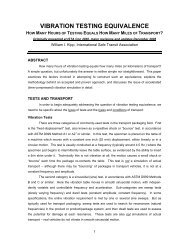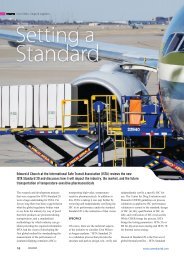Rack Transport Stability Team (RTST) - International Safe Transit ...
Rack Transport Stability Team (RTST) - International Safe Transit ...
Rack Transport Stability Team (RTST) - International Safe Transit ...
You also want an ePaper? Increase the reach of your titles
YUMPU automatically turns print PDFs into web optimized ePapers that Google loves.
<strong>Rack</strong> <strong>Transport</strong> <strong>Stability</strong> <strong>Team</strong> (<strong>RTST</strong>)Review: Summary of <strong>Safe</strong>r Handling Practices1. Over the Road Truck Handling and Final Delivery Secure Product to the Sidewalls of the truck with logistics straps (3 or more) Do NOT rely solely on neighboring freight to block products from moving Keep product packaged until inside the client’s facility wherever possible If packaging is not available, use straps and caster chocks to prevent roll-off from lift gates2. Fork Lift Handling Do NOT use fork lifts for handling unpackaged racks (on casters). Widen forks to the widest position allowed by the base pallet Don’t have the product out on the extreme tips of the forks Always put product against the mast and then tilt the mast towards driver after lifting Secure the product tightly to the mast of the forklift with straps to prevent tip over Check Fork Lengths: Prevent damage to the load BEHIND the one being lifted Drive slow. Especially when going around corners (Max Speed 3.6 km/hr. or 2.2mph).3. Pallet Jack Handling: Do not use manual pallet jacks on slopes when moving palletized products.4. Manual Handling of Unpacked Products (rolling on its own casters) Use enough people to ensure safety. Usually 3 or more depending on site situation. Be wary of gaps which could block the casters and cause a sudden stop. Use steel “sill plates” or “bridge plates” as needed to help bridge across gaps or obstructions60


